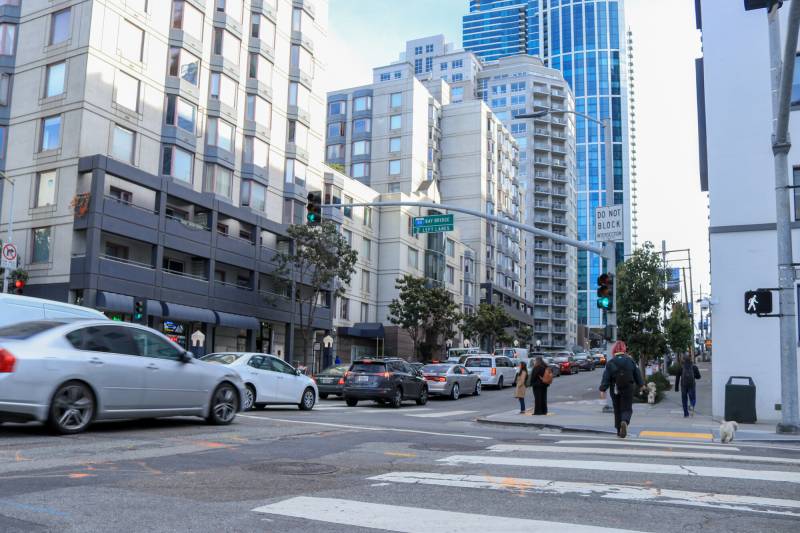Over the past two years, local officials have attempted to remove the many legislative barriers developers say have deterred them from taking on conversion projects downtown.
San Francisco planning commissioners on Thursday will consider removing another of those barriers: impact fees for commercial-to-housing conversion projects that, according to the Mayor’s Office, can add about $70,000 to $90,000 per unit — though Langlois said fees vary widely depending on the size of the project. Supporters say doing so would effectively open office space for housing along Market Street and heading north on Embarcadero. The policy would then head to the Board of Supervisors and the mayor for approval.
The conversion of office spaces into housing has its drawbacks. The city earns business tax revenue from offices, but not from homes and apartments. The impact fees that could be axed fund a host of city services, including child care, schools, and affordable housing, some of which are imposed only on certain neighborhoods, and others that apply citywide.
San Francisco city officials were not able to immediately provide KQED with information about how much revenue impact fees have generated in the downtown area that would be impacted by this proposal.
According to the city’s affordable housing department, the fees it receives for affordable housing are “highly variable” from year to year. Anne Stanley, a spokesperson for the Mayor’s Office of Housing and Community Development (MOHCD), said before the pandemic the impact fees that specifically went to her department averaged about $75 million annually. This year, those same fees generated less than $3 million, she said.
“The reality is that the current revenue coming from impact fees is so low that it doesn’t have a meaningful impact on affordable housing construction,” Stanley said. “Our perspective is that this legislation offers an acceptable tradeoff to kickstart housing production in downtown which will ultimately have a net-positive impact on San Francisco’s economy while adding much needed new homes to the neighborhood.”
Some developers and housing advocates see San Francisco’s struggling downtown as a self-fulfilling prophecy of the city’s choice in the 2010s to dedicate many of the buildings downtown exclusively for tech office and commercial use. According to a 2021 New York Times analysis with CoStar, a commercial real estate research organization, 74% of San Francisco’s downtown was dominated by office buildings with most of the city’s total jobs located there, prior to the pandemic.
“That’s not a particularly resilient land use pattern,” said Jack Sylvan, a San Francisco developer. “Finding ways to create something that is a better mix of uses is actually really good for the city in the long run.”
Other big cities have already learned this lesson and put the solution into practice. During the Gulf War recession of the early 1990s, many office buildings in New York’s lower Manhattan became vacant and underused. In 1995, the city offered tax abatements and zoning changes to those buildings, incentivizing developers to turn that space into housing. More than 6,500 new homes were created.
Thursday’s proposal is the latest attempt by city leaders to take a similar tack. Last year, the city established a plan to make it easier to convert office buildings into housing. So far, two projects have been approved, which will convert more than 119,000 square feet of vacant offices into more than 160 new apartments and studios.
As part of that plan, city officials identified real estate transfer taxes, property taxes and development impact fees as barriers to office-to-residential conversations.
